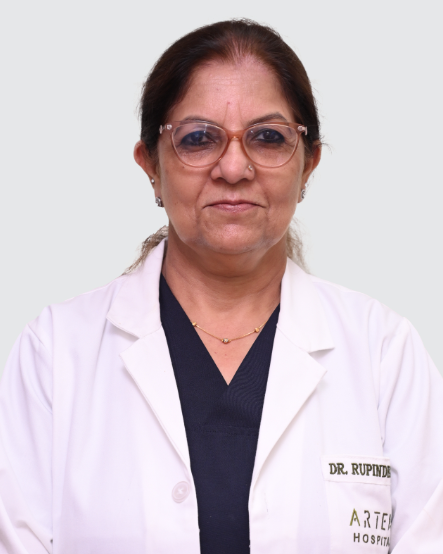What is Stage 3 Breast Cancer

Table of Contents
- What is stage 3 breast cancer?
- Types of Stage 3 Breast Cancer
- Symptoms of Stage 3 Breast Cancer
- Causes and Risk Factors of Stage 3 Breast Cancer
- Diagnosis of Stage 3 Breast Cancer
- Stage 3 Breast Cancer Treatment
- Treating Inoperable Breast Cancers
- Stage 3 Breast Cancer Survival Rate
- Takeaway
- Frequently Asked Questions
- References
What is stage 3 breast cancer?
Stage 3 breast cancer, also called locally advanced breast cancer, is a form of invasive malignancy. The size of the cancerous tumour is generally larger than 5 centimetres. In this stage, cancer spreads to the axillary (armpit) lymph nodes, skin over the breast, or muscles underneath the breast skin. However, it does not metastasise to distant organs like the bones, lungs, liver or brain.


Types of Stage 3 Breast Cancer
All types of invasive breast cancer can be classified as stage 3 of this malignancy. These may include the following:
Type | Prevalence | Description |
Invasive Ductal Carcinoma (IDC) | 80% of cases | Originates in the milk ducts and spreads beyond the ductal walls into surrounding breast tissue |
Invasive Lobular Carcinoma (ILC) | 10-15% of invasive cases | Starts in the milk-producing glands and spreads to nearby tissue |
Triple-Negative Breast Cancer (TNBC) | 10-15% of cases | Lacks the three most common breast cancer receptors:
|
Inflammatory Breast Cancer (IBC) | 1-5% of cases | Blocks the skin and lymph vessels of the breast |
Stage 3 metaplastic breast cancer is a type of triple-negative breast cancer that accounts for about 1-2% of all breast cancers.
Staging System for Stage 3 Breast Cancer
Stage 3 breast cancer is further classified into three subcategories based on the size of the tumour, lymph node involvement, and the extent of cancer spread to nearby tissues. These include the following:
Stage 3A: The cancer may involve either:
No cancerous tumour in the breast, but malignant cells present in 4 to 9 lymph nodes under the arm or near the breastbone
A tumour larger than 5 cm with cancer in 1 to 3 lymph nodes near the breastbone or under the arm
Stage 3B: The cancer spreads to the skin of the breast or chest wall (ribs, muscles, or connective tissue), causing ulceration or swelling. It may involve up to 9 lymph nodes in the armpit or near the breastbone.
Stage 3C: The cancer may have grown in the breast skin or chest wall and spread to one of the following:
Ten or more lymph nodes in the armpit
Lymph nodes above or below the collarbone
Lymph nodes near the breastbone and under the arm
Symptoms of Stage 3 Breast Cancer
Stage 3 breast cancer symptoms can vary based on the location of the tumour and the extent of spread to nearby lymph nodes. These may include:
Dimpling, redness, swelling, scaling, or open sores
Visible changes in the shape or size of the breast
Clear, red, yellow, or green discharge from the nipple or an inverted nipple
Lump in the underarm or breast
Pain or itchiness in the breast or surrounding area
Causes and Risk Factors of Stage 3 Breast Cancer
Stage 3 breast cancer develops when cancer cells in the breast continue to grow uncontrollably and create tumours. The exact cause or trigger for this change is not known. However, some factors increase the risk of this condition, including:
Non-modifiable risk factors cannot be changed or influenced and include:
Age above 55 years
Gender (women have a higher risk because of their exposure to female hormones, which promote cell growth)
Having parents, siblings, or children with breast cancer
Inherited genetic mutations involving the BRCA1 and BRCA2 genes
Radiation exposure, especially to the head, neck, or chest
There are also some modifiable risk factors which can be addressed to lower the risk. These are as follows:
Using hormone replacement therapy
Smoking and alcohol consumption
Obesity
Diagnosis of Stage 3 Breast Cancer
Diagnosing stage 3 breast cancer involves various tests and evaluations to determine the extent of the disease and decide an appropriate treatment approach. It includes the following:
Physical Examination: The doctor will assess the breast and lymph nodes for lumps, swelling, or other abnormalities. However, a lump may not always be cancerous. Different tests are required to confirm the presence of cancer.
Imaging Tests: A mammogram, ultrasound, or MRI is performed to get detailed images of the breast and surrounding tissue.
Biopsy: If an imaging test shows any abnormality, a tumour or lymph node sample will be removed and examined under a microscope.
Starting at age 40, a person with an average risk of the condition should get breast cancer screenings each year. It helps detect cancer early when it is easier to treat. People with a higher risk may need these screenings more often. You should consult a doctor to understand your risk.
Timeline for Stage 3 Breast Cancer Treatment
Stage 3 breast cancer treatment timeline varies depending on the patient. Generally, active treatment for this condition, including neoadjuvant treatment, lasts for about a year. Furthermore, patients may receive targeted treatments for 1-2 years, depending on the type of therapy.
Stage 3 Breast Cancer Treatment
Though locally advanced, stage 3 breast cancer can be cured depending on the type of cancer, the extent of spread, tumour growth rate, and the patient’s overall health. Treatment options for this condition are mentioned below:
Chemotherapy: Neoadjuvant (before surgery) chemotherapy for breast cancer stage 3 is the use of drugs to shrink the tumour and destroy cancer cells in the body. These medications are given through a vein or orally.
Surgery: Some patients with locally advanced cancer may need breast surgery for treatment. It can be of two types, including:
Mastectomy: The surgeon removes the entire breast of the patient.
Breast-conserving Surgery (Lumpectomy): If the patient responds well to chemotherapy, the doctor may remove the cancer and only some parts of the breast during surgery.
Radiation Therapy: For this stage of cancer, radiation (high energy rays or particles) is performed after surgery to destroy any remaining cancer cells. There are two types of radiation therapy:
External Beam Radiation Therapy: A machine sends radiation to target and kill cancer cells.
Brachytherapy: Also called internal radiation, it involves inserting radioactive pellets or seeds inside the breast tissue.
Hormone Therapies: These are used to treat hormone receptor-positive tumours. Drugs like anastrozole and tamoxifen stop the effect of hormones on cancerous cells. These can be used alone or with other treatments.
Targeted Therapy: It uses drugs for special proteins in cancer cells and treats only specific types of breast cancer. Examples of targeted therapies include:
Trastuzumab
Pertuzumab
Neratinib
Abemaciclib
Olaparib
Immunotherapy: Drugs like pembrolizumab stimulate the immune system to help it fight cancer cells. They are used for people with stage 3 triple-negative breast cancer.
Disclaimer: Please consult your doctor before taking any drugs for breast cancer treatment. They will adjust the dosage according to your condition.
Treatment Effectiveness
Monitoring progress after stage 3 breast cancer treatment is important. Your care team will schedule follow-up appointments to manage symptoms and monitor signs of recurrence. If physical exam findings suggest the cancer has returned, your doctor may recommend blood tests or imaging like PET or CT scans.
If the cancer returns, your doctor may explore alternative treatment options. Additionally, if you experience side effects, consult your care team, as they can prescribe medications to help manage them.
Treating Inoperable Breast Cancers
Stage 3 breast cancers can be operable or inoperable. An inoperable tumour does not mean that cancer is untreatable. It means that surgery for this type of malignancy may not achieve the desired results.
Successful breast cancer surgery involves removing enough cancerous tissue while ensuring healthy tissue remains at all margins. A tumour is considered inoperable if it is too large or dense to meet this criteria. In such cases, neoadjuvant chemotherapy may be performed to shrink the tumour and make it operable.
Remission From Stage 3 Breast Cancer
Remission is referred to as the phase where stage 3 breast cancer symptoms decrease or disappear after treatment. It can be either partial (some cancer disappears after treatment) or complete (no signs of cancer detected).
However, remission does not necessarily mean that cancer cells are absent from the body or that they will not grow in the future. Rather, it means that the doctor cannot detect any malignant cells. If a patient remains in remission for at least five years, doctors may declare the condition to be cured.
Stage 3 Breast Cancer Survival Rate
Stage 3 breast cancer life expectancy depends on several factors, including the size of the tumour, the patient’s age, overall health, and response to treatment. According to the American Cancer Society, the 5-year relative survival rate for stage 3 breast cancer is 86%. This means that 86% of individuals diagnosed with this stage of cancer will survive at the end of 5 years.
A study conducted by Saghir et al., 2023, found the stage 3 breast cancer 10-year survival rate to be 40%. This drop in survival rate underscores the importance of early detection, personalised treatment, and ongoing advancements in cancer care.
Takeaway
Stage 3 breast cancer is a serious but treatable condition. With advancements in medical treatments, many patients can achieve positive results. It is advised that you consult a doctor to discuss your needs, treatment, and supportive care options.
At HexaHealth, we are dedicated to offering accurate information and expert assistance to help you manage health challenges. From understanding stage 3 breast cancer symptoms to exploring treatment options, our platform connects you with leading doctors for timely care. Count on HexaHealth to provide the support and resources you need.
Frequently Asked Questions
What is stage 3 breast cancer?
Stage 3 breast cancer, or locally advanced breast cancer, is a stage where the malignant tumour spreads to the nearby lymph nodes or tissues but not to distant organs. It can either be operable or inoperable, depending on the tumour size.
What are the symptoms of stage 3 breast cancer?
Stage 3 breast cancer symptoms differ depending on the stage and location of the cancer. However, patients generally experience the following:
Noticeable lump in the breast or armpit
Breast swelling
Skin changes (redness, dimpling)
Nipple discharge
Visible changes in breast shape or size
What is the survival rate for stage 3 breast cancer?
According to the American Cancer Society, the stage 3 breast cancer survival rate for five years is 86%. However, this varies based on factors like the cancer subtype, overall health, and response to treatment.
Can stage 3 breast cancer be cured?
Though challenging, stage 3 breast cancer can be cured with a combination of treatments, including surgery, chemotherapy, radiation, and target therapy. Long-term monitoring is important to detect and manage recurrence.
What is the life expectancy for patients with stage 3 breast cancer?
Stage 3 breast cancer life expectancy is 86% for five years. This means that 86 out of 100 individuals will survive five years after their diagnosis.
How serious is stage 3 breast cancer?
Stage 3 breast cancer is serious as it spreads to nearby lymph nodes and tissues. The right treatment strategy can improve outcomes and manage the disease. Consult a healthcare expert for an appropriate treatment plan.
What happens in stage 3 breast cancer?
Stage 3 breast cancer is an invasive type of this condition where cancer spreads to nearby lymph nodes, skin or muscles. However, it does not metastasise to distant organs like the bones and lungs. Patients may experience symptoms like redness, swelling, changes in breast size, or a noticeable lump.
What is the 10-year survival rate for stage 3 breast cancer?
The stage 3 breast cancer 10-year survival rate is generally lower than the 5-year rate. According to a study by Saghir et al., 2023, the disease-free 10-year survival rate for this stage of breast cancer is 40%.
What does stage 3 breast cancer look like?
Breast cancer stage 3 images often show visible lumps, skin redness, dimpling, or swelling. It is important to consult a doctor for accurate diagnosis through imaging or other diagnostic tests.
What is the treatment timeline for stage 3 breast cancer?
Stage 3 breast cancer treatment timeline can vary from one patient to another. However, treatment (including neoadjuvant treatment) often lasts for a year. In addition to that, patients may receive targeted treatments for 1-2 years.
What are the treatment options for stage 3 breast cancer?
Stage 3 breast cancer treatment involves various options depending on the growth of the cancer, the patient’s age and overall health. These may include:
Surgery (lumpectomy or mastectomy)
Chemotherapy
Radiotherapy
Hormone therapy
Targeted therapy
Does chemotherapy work for stage 3 breast cancer?
Yes, chemotherapy for breast cancer stage 3 is an effective option. It helps shrink tumours before surgery and reduces the risk of recurrence after treatment.
What is the survival rate for stage 3 breast cancer without treatment?
Stage 3 breast cancer survival rate without treatment is significantly lower. Moreover, the disease can progress to stage 4 and reduce life expectancy.
What is the survival rate for stage 3 metaplastic breast cancer?
The metaplastic breast cancer stage 3 survival rate is lower than other breast cancers. According to a study by Balasubramanian et al., 2022, the 5-year overall survival rate for this condition is 60.6%.
How effective is chemotherapy for breast cancer stage 3?
Stage 3 breast cancer and chemotherapy are closely linked. Chemotherapy is an effective treatment that helps shrink tumours, improve surgery outcomes, and reduce the risk of recurrence.
Can you fully recover from stage 3 breast cancer?
Yes, stage 3 breast cancer is treatable, and many individuals are declared cancer-free after successful treatment. While some achieve long-term remission, recurrence risk is usually higher than early-stage cancers.
Does stage 3 breast cancer usually come back?
Yes, stage 3 breast cancer has a higher chance of coming back than stage 1 and 2 cancers. However, the rate depends on the subtype and treatment. For example, people with stage 3 triple-negative breast cancer have a 5-year recurrence rate of 45.5%. On the other hand, people with stage 3 triple-positive breast cancer have the lowest recurrence rate of 15.3%.
References
All the articles on HexaHealth are supported by verified medically-recognized sources such as; peer-reviewed academic research papers, research institutions, and medical journals. Our medical reviewers also check references of the articles to prioritize accuracy and relevance. Refer to our detailed editorial policy for more information.
- Mehrotra R, Yadav K. Breast cancer in India: Present scenario and the challenges ahead. World J Clin Oncol. 2022 Mar 24;13(3):209-218. doi: 10.5306/wjco.v13.i3.209

- Stage 3 breast cancer overview [Internet]. National Breast Cancer Foundation. 2019 [cited 2024 Dec 23]

- Stage 3 breast cancer [Internet]. Cancerresearchuk.org. [cited 2024 Dec 23]

- Stage 3 breast cancer: 3A, 3B, 3C, symptoms & treatment [Internet]. City of Hope. 2022 [cited 2024 Dec 23]

- Stage 3 breast cancer: 3A, 3B, 3C, symptoms & treatment [Internet]. City of Hope. 2022 [cited 2024 Dec 23]

- Breast cancer diagnosis, types & stages [Internet]. Mskcc.org. 2024 [cited 2024 Dec 23].

- Stage 3 – locally advanced breast cancer [Internet]. National Breast Cancer Foundation (NBCF) | Donate Online. 2020 [cited 2024 Dec 23]

- El Saghir NS, Khalil LE, El Dick J, Atwani RW, Safi N, Charafeddine M, et al. Improved survival of young patients with breast cancer 40 years and younger at diagnosis. JCO Glob Oncol [Internet]. 2023;(9).

- Balasubramanian A, Iyer P, Ranganathan R, Murhekar K, Dhanushkodi M, Ganesarajah S, et al. Metaplastic carcinoma of the breast: real-world outcome from a tertiary cancer centre in India. Ecancermedicalscience [Internet]. 2022 [cited 2024 Dec 23];16

Last Updated on: 23 December 2024
Author

Deeksha Chaudhary
Graduated & Post Graduated from Delhi University in Political Science.
3 Years Experience
As an SEO Content Writer with 3 years of experience, she specializes in creating high-quality, optimized content, including website content, blogs, articles and newsletters. Post-graduated in Political Science from...View More
Expert Doctors (10)
NABH Accredited Hospitals (6)
Latest Health Articles





















 Open In App
Open In App